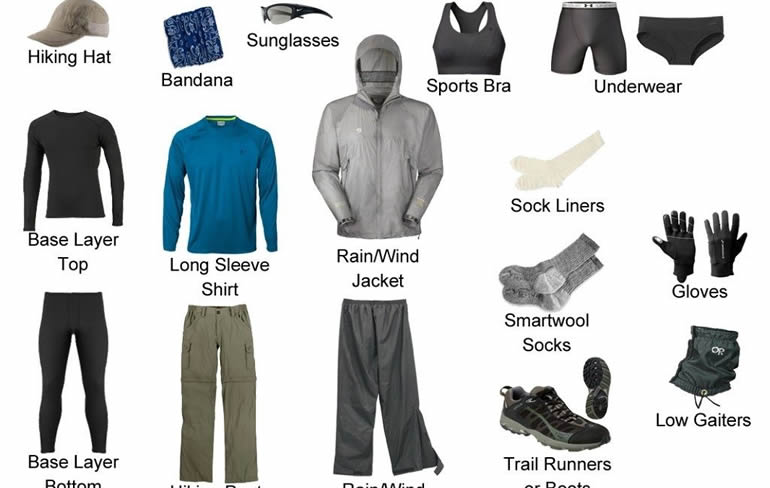What to Wear on a Gorilla Trekking Safari—Clothing Tips
Gorilla trekking takes you deep into Africa’s misty rainforests. You’ll hike through thick vegetation, cross muddy slopes, and face unpredictable weather. What you wear can make or break your comfort on the trail.
Here’s your complete clothing guide to stay protected, dry, and prepared.

Long-Sleeved Shirt and Long Pants
Forests like Bwindi, Volcanoes, and Virunga are filled with nettles, thorny plants, and biting insects. A long-sleeved shirt and long trousers protect your arms and legs from scratches and bites.
Avoid short sleeves or shorts — they leave skin exposed to insects and foliage. Go for lightweight, quick-dry fabric that breathes well and dries fast.
Waterproof Hiking Boots
The forest floor is often wet, slippery, and uneven. You’ll walk on steep trails and over exposed roots.
Choose waterproof hiking boots with solid ankle support and deep tread. Don’t wear new boots for the first time on your trek — break them in days before your trip to avoid blisters.
Rain Jacket or Poncho
Rain can fall at any time — even in the dry season. A lightweight, breathable rain jacket will keep you dry and comfortable.
Ponchos are also useful but may snag on branches. Look for gear that packs easily in your daypack without taking up too much space.
Gardening Gloves or Trekking Gloves
You’ll often grab branches for support as you climb. Gloves protect your hands from cuts, thorns, and slippery vines.
Choose gloves with a good grip. Lightweight trekking gloves or simple gardening gloves work perfectly.
Gaiters or Long Socks
Tuck your trousers into long socks or wear ankle gaiters. This helps prevent red ants and insects from crawling up your legs.
Gaiters also block mud, leaves, and moisture from getting into your boots. They’re not essential but offer extra comfort.
Neutral-Colored Clothing
Bright colors can disturb wildlife. Stick to earth tones like green, brown, beige, or grey.
Avoid white (gets dirty fast), black (attracts heat), and camouflage (restricted in some countries). Neutral tones help you blend into the environment and reduce visual stress on animals.
Hat and Sunglasses (Optional)
A wide-brimmed hat protects you from both sun and light rain. Sunglasses can shield your eyes, but keep them off during gorilla viewing for better visibility and to avoid glare.
Change of Clothes (for after the trek)
You’ll likely return muddy and wet. Bring a clean shirt, dry pants, and a fresh pair of socks for comfort after the trek — especially if you have a long drive ahead.
Leave them in your safari vehicle or daypack if space allows.
What Not to Wear
- No sandals or open shoes—unsafe for jungle terrain
- No perfumes or scented products—they can attract insects
- No flashy jewelry—not only unnecessary, but risky
Keep your outfit practical. You’re here for the gorillas, not for fashion.
Plan Your Safari
Dressing right for your gorilla trek means you stay focused on the experience—not the discomfort. Choose protective layers, invest in good boots, and stick to neutral tones. With the right clothing, you’ll feel more confident tackling the jungle trail.

